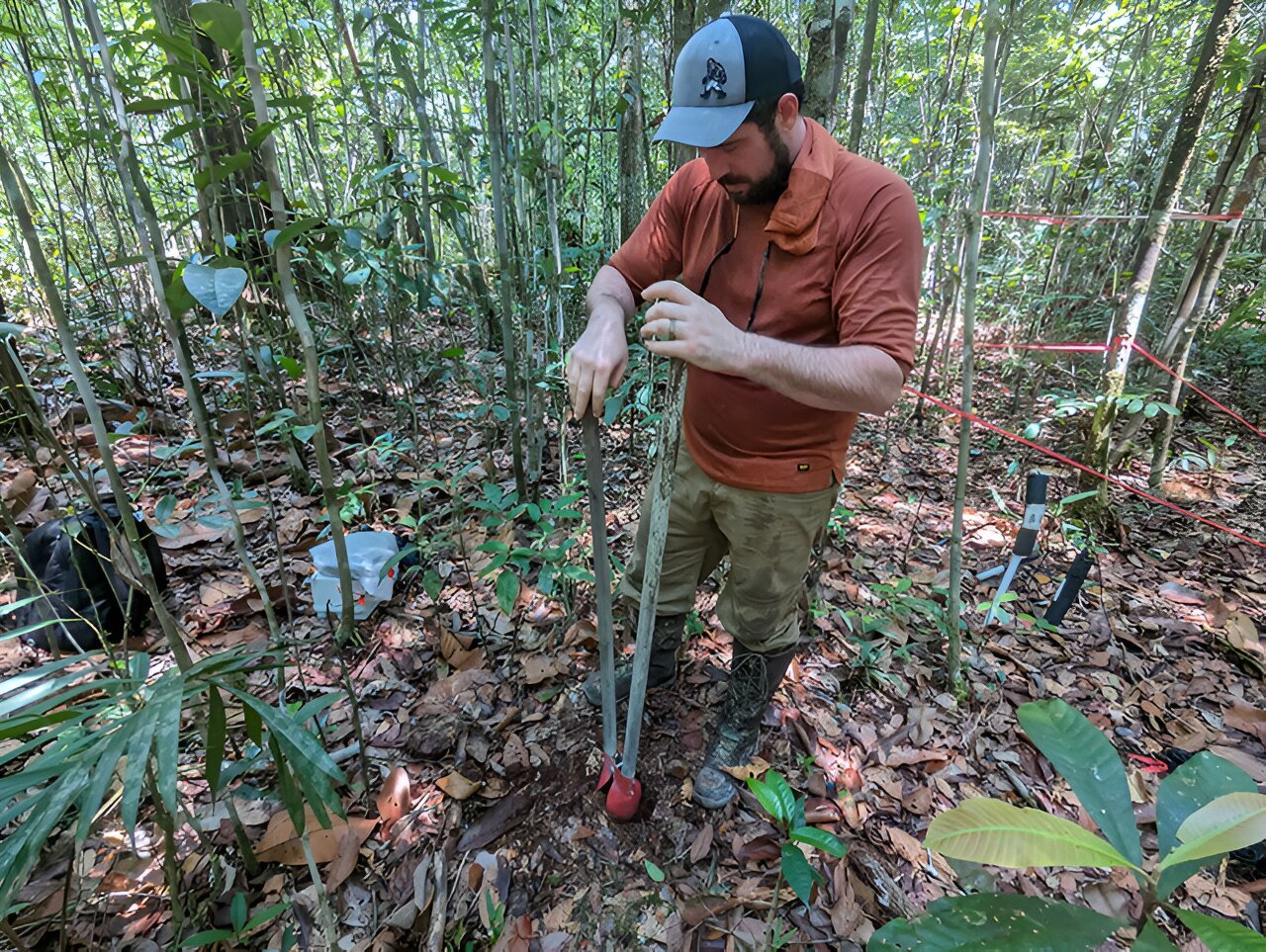
Hydraulic failure in tropical environments is expected to increase, according to new research published in New Phytologist. As weather patterns change and temperatures rise, plants will need to adapt in order to survive. Hydraulic failure occurs when more water is lost from transpiration than is taken in through the roots. If uncorrected, the xylem loses conductivity and the plant will not survive.
“Increases in hydraulic failure rates will likely increase mortality and vegetation turnover. Over extended periods, this will alter the vegetative composition, forcing more drought-tolerant species to become a more significant proportion of forests,” said Zachary Robbins, a research scientist at Los Alamos National Laboratory and corresponding author of the paper.
“The long-term risk is that we may be losing natural land carbon stores during a time when we need to reduce atmospheric carbon.”
The paper is the first to use the FATES-HYDRO model to assess the risk of hydraulic failure, which is an important piece of the puzzle for scientists to understand the impacts of changing climates. The results show that, while rising temperatures in tropical climates generally result in short-term productivity improvements, the long-term effects lead to significantly increased mortality rates.
Previous studies have relied on the Penman-Monteith-Leuning model, which does not account for two important variables: increased carbon dioxide and vapor pressure deficit. Robbins’ study analyzed plant trait assemblages to determine which might perform well under future climate conditions. Robbins and his team used 16 Earth-system models to test different traits under potential future scenarios.

Hydraulic failure is an amalgamation of several plant trait assemblages, and the ability to understand how those assemblages interact with one another to contribute to hydraulic failure is crucial to understanding how to promote healthy growth.
Some plants are able to adapt, implementing strategies such as adjusting the percentage of time their stomata remain open. Through this process, plant trail assemblages act as a “functional trait filter” and plants that cannot survive in the changing conditions will give way to plants that are more drought and heat resistant.
The reduction of tropical forests due to hydraulic failure would be felt around the world.
“Simulations like this can help us understand future risks facing natural resources and allow us to respond to or preempt global consequences of ecological change,” Robbins said. “Addressing these changes in hydraulic failure rates will be vital to understanding rates of wildfire, forest dieback and natural resource security.”
The Los Alamos team is continuing its efforts with the FATES-HYDRO model to better understand plant mortality worldwide, and is working on extending this project to the American Southwest.
More information:
Zachary Robbins et al, Future climate doubles the risk of hydraulic failure in a wet tropical forest, New Phytologist (2024). DOI: 10.1111/nph.19956
Provided by
Los Alamos National Laboratory
Citation:
Research predicts rise in tropical hydraulic failure (2024, September 19)
retrieved 19 September 2024
from https://phys.org/news/2024-09-tropical-hydraulic-failure.html
This document is subject to copyright. Apart from any fair dealing for the purpose of private study or research, no
part may be reproduced without the written permission. The content is provided for information purposes only.
